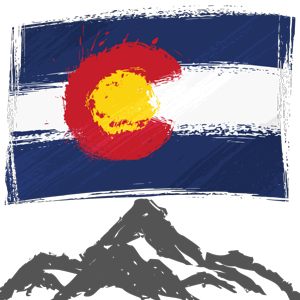Perhaps someone should drop SafeSport and the USFS an email inquiring about what "Contact/Communication Limitations" and "No Contact Directives" mean exactly.

"No contact directives" prohibit any form of communication through any medium with a specific individual during an investigation. They aren't the same as legal restraining orders; the parties are allowed to be in the same physical space, but are instructed to avoid each other and not speak to each other. There can be multiple no contact directives in a single case but each directive specifically prohibits communication with a named individual. It's not a blanket prohibition like "Don't contact any former students."
"Contact/communication limits" prohibit one-on-one or unsupervised interactions outside of in-person coaching. For example, general SafeSport policy requires coaches to copy another adult on any text/DM sent to a minor athlete. This restriction can require that a coach copy another adult on any text/DM sent to any athlete, including athletes over the age of 18.
Goddamn it USFSA get it together
They just don't give a fcuk about the safety of their athletes, do they?
Sappenfield is under investigation by the U.S. Center for SafeSport. Federal law prohibits USFS from enacting additional restrictions on participation once the Center for SafeSport has accepted jurisdiction over a case. This is a major flaw in the SafeSport law, especially with how long it takes SafeSport to conduct investigations.
But Tara Modlin et al said that one of the accusers was "just jealous" and was trying to take Coughlin's commentating job. Ashley was/is a bigger name than John was so it couldn't have been her. She didn't need to take anything from anyone, she's a World medalist and an Olympian. I also don't think that sounds like Bridget, she was a former junior pair skater with no name recognition outside of the very online uberfans. afaik she wasn't working towards a broadcasting career either. Maybe there was another possible victim who they thought might come out who was closer to John's level and tried to get ahead of the story. Or they were just outright lying (which is very possible).
Please do not speculate about the identities of victims, witnesses, or third party reporters. This type of comment and public speculation is a reason why many people decline to participate in SafeSport investigations.
What difference does it make who Modlin was referencing? Does the identity of the person referenced make Modlin's comment more or less appropriate? What would you do with the information, give credence to her comment by speculating about the referenced person's internal motivations with no information about what those are because that person hasn't spoken publicly? Can you see how that ties back to these types of "analyses" being a reason why people within the very small skating community decline to participate in SafeSport investigations?
Disparaging the motivations of the victim or third party reporter is almost ubiquitous when allegations of assault or abuse are made. It's straight out of the abuser playbook. It's intended to cast doubt on the allegation, harm the reputation of the victim/third party reporter and silence others from coming forward because they see what will be done to them. Please don't give that tactic power.
I really wish SafeSport had the authority to ban someone as soon as a valid complaint was filed (valid = worthy of further investigation). Everyone has the right to a fair hearing, but it makes me sick to think of what kind of behaviour might be going on between a complaint being filed and a suspension being issued. If SafeSport had more investigators and more resources, the cases could be investigated more quickly and actions taken a lot sooner.
The Center for SafeSport does have the authority to "ban" (suspend) someone as soon as they read the complaint and accept jurisdiction. It's called a "temporary suspension" and prohibits all participation in all aspects of sport sanctioned by all governing bodies under the jurisdiction of USOPC. A temporary suspension can also be issued at any point in an investigation.
Since most ice time in the U.S. is run directly by rinks, not through USFS clubs, both temporary and permanent suspensions generally mean that coaches can continue to coach even when "banned" by SafeSport; they just can't coach at USFS-sanctioned events like competitions. In other sports in which practices are held by clubs/teams directly sanctioned by the USOPC governing body, a SafeSport ban doesn't prevents a banned coach from coaching teams under other governing bodies: a volleyball coach banned by SafeSport can't coach a U.S.A. Volleyball club team but can coach an AAU, NCAA, or high school team.
SafeSport isn't a panacea that magically protects athletes from abusive coaches, unfortunately. That doesn't excuse SafeSport's many massive failings, but it means SafeSport is only one tool in a much larger battle to reduce and prevent abuse in sports.




